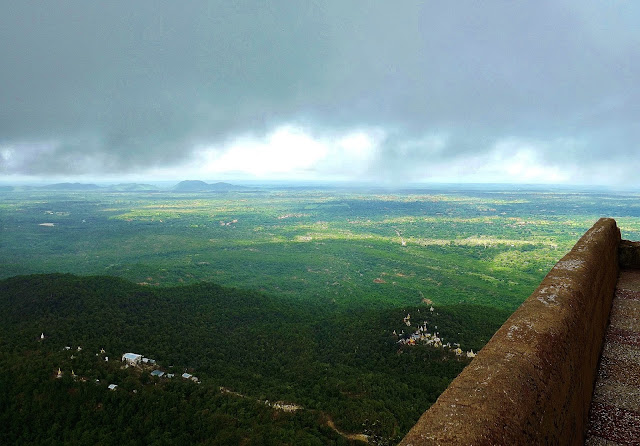Due
to a brief illness and unreliable internet access I’ve been unable to update
this blog for the past few days, but now those problems are behind me so it’s
time to get cracking again.
For
my last day in Bagan, I made the two hour trip to the famed and revered Mout Popa.
Mount Popa is a bit of a misnomer, because when most people, Burmese and
foreigners alike, refer to the mountain, nine times out of ten they are referring
to this:
Yea.
That is the Popa Taungkalat monastery. Unbelievably picturesque and dramatic
when viewed from any angle, the monastery sits atop an outcropping of the
actual mountain. Anyone can go to the top, but there is no elevator and the view
is not for the faint of heart. Although I was beginning to feel quite sick by
the time we arrived at the base of the monastery, there was no way I was going
to let that impede my experience having come so far to see it. Ultimately, the
climb was tiring but not so horrible, and I reached the top without incident,
save for some encounters with the monkeys.
Before
I go on, I’ll speak a bit on the monkeys. They are Macaques, and there are a
lot of them. Making the climb up the monastery steps, you really get the feeling
that you are inside an old Travel Channel documentary (before it turned into
Food Network 2). We arrived early in the morning, before most of the European
tourists had had their tea or croissants or whatever they do, so it was just us
and the locals for the most part. The monkeys are everywhere, jumping around,
begging for food, and in some cases grabbing onto you or trying to steal your
belongings. It’s really an eclectic environment, but also an authentic
experience to be sure.
Once
I reached the top, I took a moment just to gather myself and enjoy the view
before exploring the summit. There really isn’t much to see at the top, just
the usual Buddha statues and collection boxes; the best part is the gorgeous
scenery visible in all directions. The monkeys become fewer and farther between
the higher you get, and at the top I found only one. He was large and looked
old, and I theorized that perhaps only one monkey out of the lot of them gets
the honor to sit at the top, and this particular monkey was the king. I had a
chat with him about how I had figured this out, and then we posed for a picture
together.
Back in Bagan, there were still a couple of things I had yet to examine. I took a closer look at the still-intact portions of the old city walls, and also toured the reconstructed version of the palace. Night was beginning to fall, so Anna and I took a pleasant ride in one of the many horse carts that weave through the monument zone, followed by a self-guided tour of some of the large pagodas that are lit up at night. It was an excellent way to spend my final night in Bagan, and satisfied that I had made the most of my stay I began looking forward to my trip to Mandalay the next day.



































